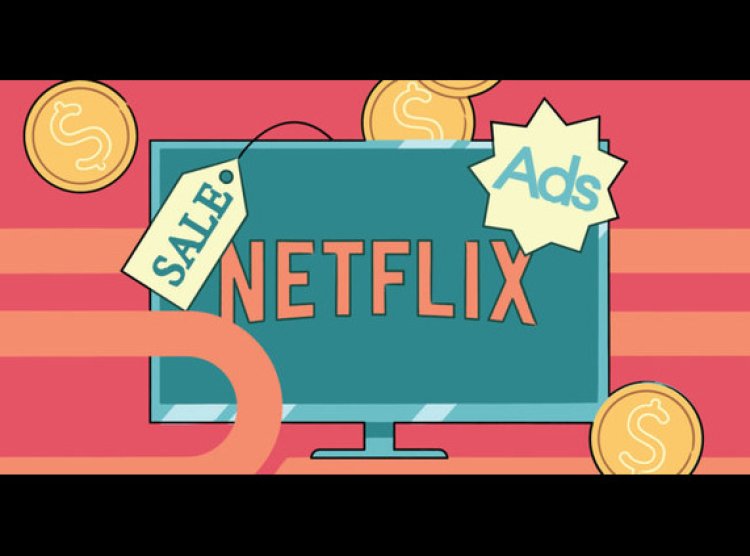Ad-Supported Content Gains Popularity in Evolving Digital Media Landscape
As OTT channels proliferate, consumers embrace ad-supported models, signaling a significant shift in content consumption preferences and habits

The exchange value proposition in digital media has evolved significantly, marked by rapid industry changes. This evolution reflects the dynamic shifts in how audiences consume content, transitioning from traditional television to a more diverse range of digital platforms.
In 2016, with the rise of platforms like Netflix, viewers who were accustomed to commercial interruptions embraced the concept of paying for ad-free content. This model was initially welcomed, as it offered a seamless viewing experience free from the disruptions of traditional TV ads. However, the landscape of digital media consumption has continued to evolve. The proliferation of Over-The-Top (OTT) channels has led to a resurgence in the popularity of ad-supported content, indicating a shift in consumer preferences and habits.
Life in the FAST Lane
Nikhil Kumar, Chief Growth Officer at mediasmart by Affle, highlights the significant changes in content consumption patterns. With over 46 OTT channels and more than 500 Free Ad-Supported Streaming Television (FAST) channels, consumers now have unparalleled content choices across various devices. This variety transcends language and geographical barriers, catering to a global audience with diverse preferences. The priority for users is access to a wide array of content, whether it is ad-supported or ad-free. Advertising on Connected TV (CTV) platforms is not causing significant fatigue, and potential concerns about ad overload can be managed effectively as they arise.
Experts note a paradigm shift in the Indian video consumption landscape. Russhabh R Thakkar, Founder and CEO of Frodoh World, points out that advertising is now seen as a reasonable trade-off for accessing premium content without high upfront costs. This perspective is especially prevalent among younger demographics who are adept at navigating the ad-viewing experience across multiple touchpoints. The growth of Advertising-Based Video on Demand (AVOD) and FAST models signifies a major change in how Indian audiences consume and value content. This shift is driven by convenience and affordability amid a fragmented media landscape offering a dizzying array of Subscription Video on Demand (SVOD), AVOD, OTT, and bundled options.
Renaissance of Ad-Supported Content
Thakkar observes a renaissance of ad-supported consumption, reminiscent of the traditional TV era when advertising was the norm. However, the modern AVOD/FAST experience stands apart by offering premium long-form content free to consumers, funded by strategic and contextual advertising. This model provides a sustainable revenue stream while maintaining the accessibility of high-quality content for viewers.
The scattered digital media landscape, characterized by diverse screens of all sizes and varying internet speeds and costs, supports this shift. Smart TVs have become more accessible due to competitive pricing from smaller manufacturers. Today, Smart TV manufacturers, irrespective of the price point, integrate FAST channels directly into their devices. This integration provides users with easy access to a wide range of free content without the need for additional devices or subscriptions. Kumar notes that unlike traditional linear television, which often requires additional fees for popular channels, FAST channels are available for free, supported by advertisements.
Deleise Ross, Senior VP and Business Head at MudraMax contrasts the SVOD model, which targets niche audiences willing to pay for their desired content on a monthly, quarterly, or annual basis, with the AVOD model, which offers unlimited videos for free, ensuring vast reach and democratic viewership. YouTube stands out as a prominent example of AVOD advertising. The revenue generated from ads is strategically utilized to offset production costs, manage the expenses of the best online video hosting platforms, and facilitate content delivery. YouTube promotes its ad-free subscription platform to attract premium audiences who are willing to pay for an uninterrupted viewing experience.
Connecting the Dots
Kumar explains that advertising on FAST channels is available through two mediums: within the Original Equipment Manufacturer (OEM) ecosystem, with each Smart TV manufacturer (such as Xiaomi and TCL) having their own FAST ecosystem, and through FAST aggregators who provide access to FAST channels across OEMs. On mediasmart, various players curate over 500 FAST channels for advertisers. The flexibility to access different types of content without committing to a subscription encourages viewers to explore ad-supported options.
Ross adds that creating an effective video monetization platform involves more than just providing content. It ensures that great content is delivered to a carefully selected group of users while maintaining a steady income and facilitating growth. The ever-changing world of Video on Demand (VOD) requires flexibility, creativity, and a commitment to meeting user needs.
The rise of ad-supported streaming underscores the necessity of a mixed strategy to succeed. While YouTube promotes its Premium ad-free tier for viewers willing to pay for an uninterrupted experience, its ad-supported offerings remain crucial to monetizing the large user base that prefers free content.
Thakkar concludes that the elevated value proposition of ad-supported consumption is not a compromise but an empowering choice for cost-conscious Indian audiences. This model provides access to a wide array of premium entertainment options without recurring financial commitments. As data costs decline and connectivity improves, this ad-supported trend is poised to become mainstream across India. Leading AVOD/FAST platforms enhance this experience by delivering highly engaging, relevant ad experiences that seamlessly complement the content stream, leveraging granular targeting based on factors like language preferences, location, content genres, and viewing habits to serve ads that feel contextual and non-intrusive to the viewer.

 Sumit Rawat
Sumit Rawat 










